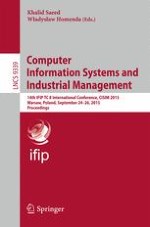2015 | Buch
Computer Information Systems and Industrial Management
14th IFIP TC 8 International Conference, CISIM 2015, Warsaw, Poland, September 24-26, 2015, Proceedings
herausgegeben von: Khalid Saeed, Wladyslaw Homenda
Verlag: Springer International Publishing
Buchreihe : Lecture Notes in Computer Science
